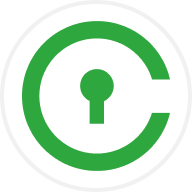
Everipedia-Preis

Haftungsausschluss
OKX gibt keine Anlage- oder Vermögensempfehlungen. Du solltest gut abwägen, ob der Handel und das Halten von digitalen Assets angesichts deiner finanziellen Situation sinnvoll ist. Bei Fragen zu deiner individuellen Situation wende dich bitte an deinen Rechts-/Steuer- oder Anlagenexperten. Weitere Einzelheiten findest du in unseren Nutzungsbedingungen und der Risikowarnung. Durch die Nutzung der Website eines Drittanbieters („TPW“) akzeptieren Sie, dass jegliche Nutzung der TPW den Bedingungen der TPW unterliegt. Sofern nicht ausdrücklich schriftlich angegeben, steht OKX einschließlich seiner verbundenen Unternehmen („OKX“) in keinerlei Verbindung zum Eigentümer oder Betreiber der TPW. Sie stimmen zu, dass OKX nicht für Verluste, Schäden oder sonstige Folgen haftet, die sich aus Ihrer Nutzung der TPW ergeben. Bitte beachte, dass die Nutzung einer TPW zu einem Verlust oder einer Minderung deiner Assets führen kann. Das Produkt ist möglicherweise nicht in allen Ländern verfügbar.
Marktinformationen zu Everipedia
Marktkapitalisierung = Umlaufmenge × letzter Preis

IQ-Rechner


Preis von Everipedia heute in USD
Beliebte Everipedia-Konvertierungen
| 1 IQ in USD | 0,0044410 $ |
| 1 IQ in EUR | 0,0039024 € |
| 1 IQ in PHP | 0,24970 ₱ |
| 1 IQ in IDR | 74,7266 Rp |
| 1 IQ in GBP | 0,0033318 £ |
| 1 IQ in CAD | 0,0061546 $ |
| 1 IQ in AED | 0,016312 AED |
| 1 IQ in VND | 115,56 ₫ |
Über Everipedia (IQ)
- Offizielle Website
- Github
- Block Explorer
Häufig gestellte Fragen zum Everipedia-Preis
Everipedia ist ein dezentrales Wissensrepository, das auf Blockchain-Technologie basiert. Es bietet Benutzern eine Plattform zum Beitragen und Teilen von Informationen und bietet gleichzeitig die Möglichkeit, Belohnungen zu verdienen.
Der Besitz von IQ-Tokens bietet mehrere Vorteile. Token-Inhaber können einen Beitrag zum Netzwerk leisten und Belohnungen verdienen, indem sie ihre IQ-Token einsetzen. Darüber hinaus erhalten sie als Stakeholder Stimmrechte innerhalb des Governance-Ökosystems, was es ihnen ermöglicht, an Entscheidungsprozessen teilzunehmen und ein Mitspracherecht bei der zukünftigen Entwicklung des Netzwerks zu haben.
Kaufen Sie ganz einfach IQ-Tokens auf der Kryptowährungsplattform OKX. Ein verfügbares Handelspaar im OKX-Spothandelsterminal ist IQ/USDT.
Mit OKX Convert können Sie auch Ihre vorhandenen Kryptowährungen, einschließlich Bitcoin (BTC), Ethereum (ETH), Tether (USDT), und USD Coin (USDC), gegen IQ tauschen, ohne Gebühren und ohne Preisverfall.
ESG-Offenlegung
IQ-Rechner


Haftungsausschluss
OKX gibt keine Anlage- oder Vermögensempfehlungen. Du solltest gut abwägen, ob der Handel und das Halten von digitalen Assets angesichts deiner finanziellen Situation sinnvoll ist. Bei Fragen zu deiner individuellen Situation wende dich bitte an deinen Rechts-/Steuer- oder Anlagenexperten. Weitere Einzelheiten findest du in unseren Nutzungsbedingungen und der Risikowarnung. Durch die Nutzung der Website eines Drittanbieters („TPW“) akzeptieren Sie, dass jegliche Nutzung der TPW den Bedingungen der TPW unterliegt. Sofern nicht ausdrücklich schriftlich angegeben, steht OKX einschließlich seiner verbundenen Unternehmen („OKX“) in keinerlei Verbindung zum Eigentümer oder Betreiber der TPW. Sie stimmen zu, dass OKX nicht für Verluste, Schäden oder sonstige Folgen haftet, die sich aus Ihrer Nutzung der TPW ergeben. Bitte beachte, dass die Nutzung einer TPW zu einem Verlust oder einer Minderung deiner Assets führen kann. Das Produkt ist möglicherweise nicht in allen Ländern verfügbar.











